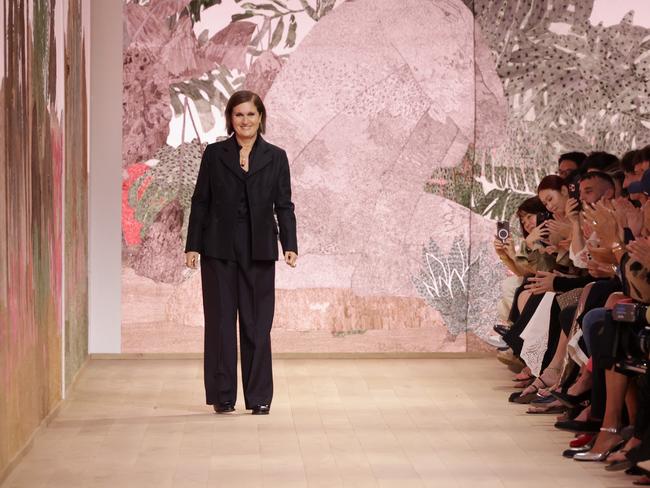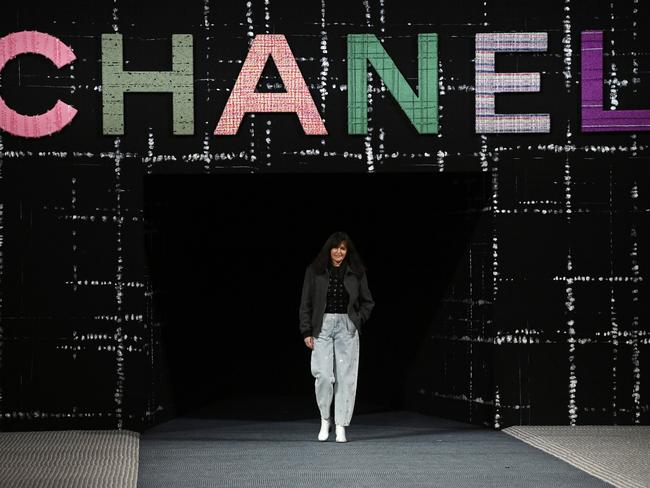Who should decide what women wear?
Male creative directors for luxury fashion brands are still the norm. Designers, critics and consumers are demanding more diversity: ‘It’s sexism.’

Phantom Thread, the 2017 movie about a mid-century male designer and his younger female muse, unfurls as a cautionary tale about control gone wrong. In an early scene, Reynolds Woodcock (played by Daniel Day-Lewis) fits a dress on Alma (Vicky Krieps) and remarks that she has no breasts. When she apologises, he responds: “It’s my job to give you some. If I choose to.” Creepy!
The film’s writer and director, Paul Thomas Anderson, portrayed the fictional Woodcock as an uncompromising perfectionist who didn’t care much about the humans wearing his creations.
Anderson based his exacting couturier on an amalgamation of larger-than-life mid-century male designers, from Cristobal Balenciaga to Charles James. “I would keep seeing pictures of these couture houses,” Anderson told the British Film Institute, “and it was always a man with dozens of women behind him, in lab coats, doing his work.”
The director picked up on a pattern deeply ingrained in the fashion industry: the male genius designing, and even revolutionising, women’s clothing. Think of the visionary Christian Dior in the 1950s and ’60s; the louche, embattled Yves Saint Laurent from the ’60s to the ’90s; bon mot-spouting workhorse Karl Lagerfeld from the ’70s to the 2000s; the provocateur Demna today.

While many strong female creative directors and brand founders have emerged, from Coco Chanel to Donna Karan to Phoebe Philo, they have been the exception rather than the rule. The fact male creative directors often drive women’s fashion is rarely questioned.
Until now. In the wake of the spring women’s fashion shows in Paris, Milan, London and New York, the lack of female designers helming luxury brands is reaching a boiling point in the discourse.
“It’s just weird that in an industry that’s really centred on women’s desires and women’s glamour and beauty, the top jobs are overwhelmingly male,” said Jeremy Lewis, an independent fashion critic.
On October 3, Alexander McQueen announced that designer Sarah Burton would be replaced by Sean McGirr, formerly head of ready-to-wear at JW Anderson. McGirr’s appointment meant every major fashion house at Kering would be designed by a white man. A widely circulated graphic by fashion media company 1 Granary pointed out the homogeneity of Kering’s designers. Kering declined to comment.
This week, Davide Renne, another white male designer, formerly at Gucci, was named creative director of Moschino.
On social media, at design schools, at recruiting agencies, many are questioning the lack of diversity at the highest ranks of fashion, particularly when so many design students and lower-level designers are women.
“It’s sexism,” said Bianca Kuttickattu, founder and creative director of New York clothing line Namai Studio. She noted the design schools she attended, including Middlesex University in London and Institut Francais de la Mode in Paris, had more women than men. Of her peers, she said: “What I’ve observed is that women’s careers just stop at a certain point, normally around design-director level, and they just never get any further.”

Floriane de Saint Pierre, the Paris founder of an eponymous advisory and executive search firm in Paris who has worked with many high-profile fashion clients, said it wasn’t as though fashion houses didn’t have women to select. If a brand is “ready to recruit a number two for the top role, the pool of talented senior women designers definitely exists”.
Meanwhile, appreciation for female designers has never been more fervent.
Burton’s last collection for Alexander McQueen garnered a standing ovation and warm embraces for the designer from Kering chief executive Francois-Henri Pinault and Anna Wintour.
Anticipation for Philo’s LVMH-backed return to fashion is high.
Two New York exhibitions focus on female designers this northern autumn: the Jewish Museum’s Mood of the Moment: Gaby Aghion and the House of Chloe opened last week, and the Costume Institute at the Metropolitan Museum of Art’s Women Dressing Women opens December 7. The Jewish Museum show explores Chloe, one of the first female-founded luxury houses, which has served as a launch pad for an astounding array of young female designers including Martine Sitbon, Stella McCartney, Philo, Hannah MacGibbon, Clare Waight Keller, Natacha Ramsay-Levi and Gabriela Hearst (and a few men, including most notably Lagerfeld). Chloe recently named another woman, Chemena Kamali, to replace Hearst.
As chronicled in the exhibition, Chloe was founded in 1952 and became an alternative to the more rigid haute couture houses of the post-war period, including Dior with its New Look. Aghion, who swam every day, wanted to create clothing that moved with her: as “well-made clothes that increased movement rather than restricting it”, as she said. That sentiment jibes with Coco Chanel, the original horse girl, who designed clothing to be walked and danced in rather than for posing.

Mellissa Huber, co-curator of Women Dressing Women, cautions against too narrow a view of female designers. She said the Costume Institute’s coming exhibit would focus on the “range and plurality and richness” of female designers, from the avant-garde, sculptural work of Rei Kawakubo of Comme des Garcons to the punk glamour of Vivienne Westwood.
Still, she said, the work of women such as mid-century designers Claire McCardell and Bonnie Cashin draws on “their own lived experience within the female body”. Simple innovations, such as pockets, ties and elements that allow the wearer to customise the garments to their own body, are contributions that endure today.
Huber spoke about the female designers throughout history who “created their own spaces, circumventing the broader system”. It’s a tradition that endures today, with designers such as Daniella Kallmeyer of New York-based brand Kallmeyer, which has developed a following for its downtown-cool tailoring.
Kallmeyer said: “What we’ve built has worked so well because we’ve done so devoid of male gaze. I’ve seen how that has resonated with our female customer base and how Kallmeyer really becomes about a feeling of wearing clothes and not just a look … my approach to designing for women or for clothes in general starts with our bodies and how we’re going to feel in those clothes.”
That kind of sensitivity is perhaps what’s missing at many major luxury houses today, but that doesn’t mean it’s not marketable. Although many of LVMH’s luxury brands are, like Kering, designed by men, one notable exception is Maria Grazia Chiuri at Dior, who drove its annual revenue to more than €80bn ($133bn) in 2022.
“Everything sells,” critic Lewis said of Chiuri’s Dior. “And I think a lot of it comes to the fact that she’s a woman and that she is thinking about women.”
The Wall Street Journal

To join the conversation, please log in. Don't have an account? Register
Join the conversation, you are commenting as Logout